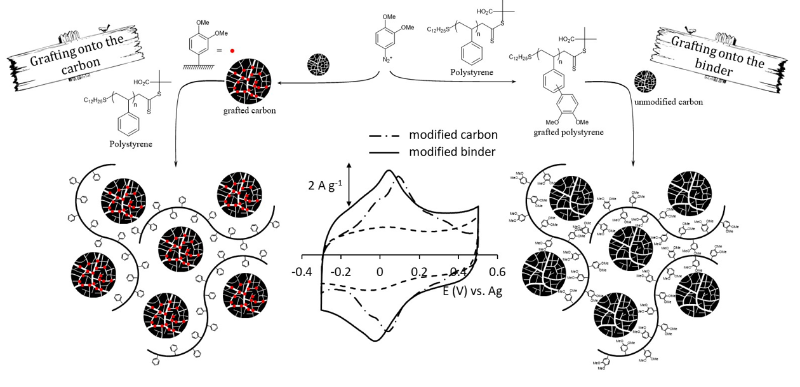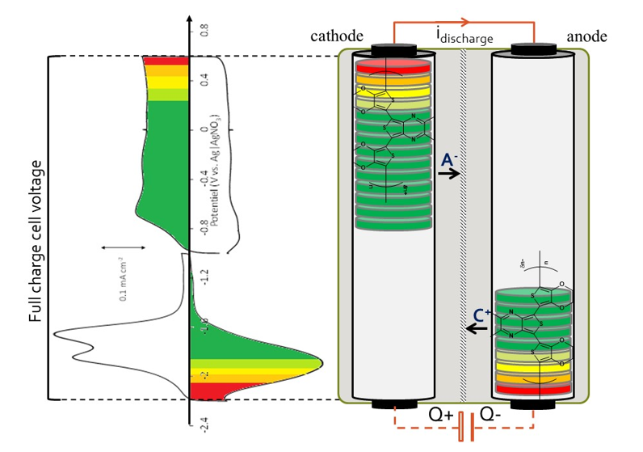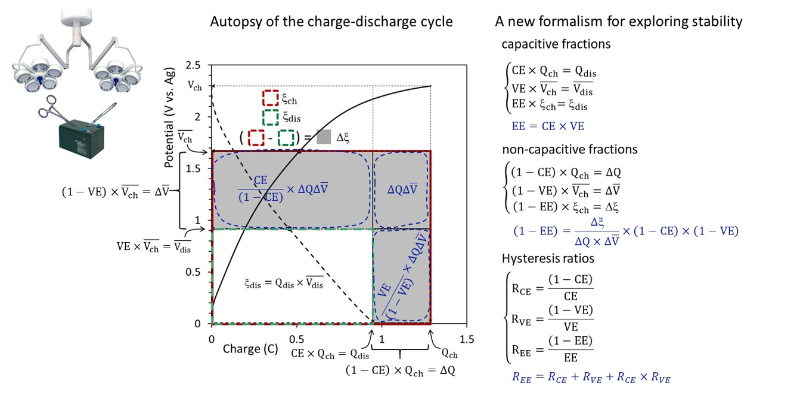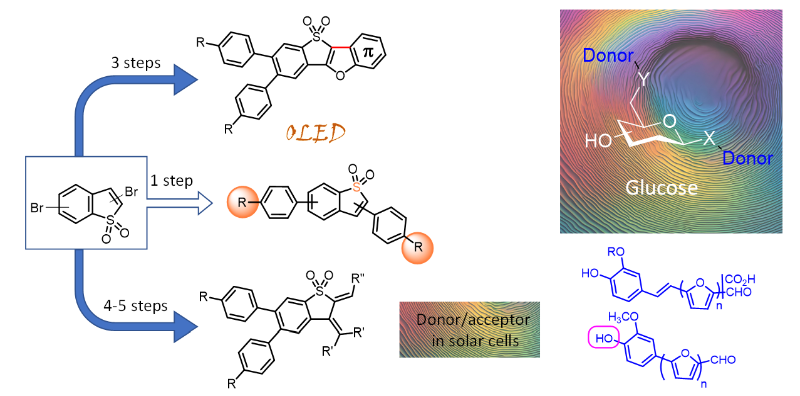Research Thematics
Smart binders for supercapacitors (C. Cougnon, F. Gohier, M. Oçafrain)
The quest to build low-cost and high-energy portable charge storage systems in an ecofriendly way feeds an ever-growing interest in pursuit of novel carbon-based supercapacitors. In this context, porous carbons have demonstrated suitability as robust high-power supercapacitor electrode materials owing to their long-life cycle, high capacitance and high rate capability, but are still limited in energy. Strategies that have proven to be effective to boost their energy consist in adding a faradaic component to the charge storage, yielding hybrid systems. In this context, carbon-based supercapacitors that contain attached small redox molecules are promising because of the high modularity of organic compounds. However, limitations on cyclability and rate capability are typically obtained as a result of just physisorbed molecules and accumulation of molecules at the pore entrance of activated carbons. For these reasons, we aim at developing novel approaches for improving the integration of molecules in the electrode material to combine their high capacity with the fast charge storage kinetic of carbons. A promising strategy is to reconsider the binder as an active matter for the storage by introducing molecules along the polymer chains.
Financial support
- ANR PRC / projet HOMERE / 2022-2026
Conducting Polymers for organic batteries (C. Cougnon, F. Gohier, M. Oçafrain)
This work is in the context of the energy transition as the energy storage becomes a strategic element to secure the electricity supply because of the problem of the intermittent nature of renewable energies. To be a credible solution, storage must be robust, efficient, competitive and green enough from initial conception to end of life, to reduce both their environmental and economic costs. In such a perspective, there is a consensus around organic batteries to reconcile storage and circular economy. Our researches in this area focus on the preparation of conducting redox polymers capable to work both at the positive and negative electrodes in a fully organic storage system. The objective is two-fold: improve the performance of batteries and offer a credible alternative to lithium technologies.
Financial supports
- Cofinancement Région - Trajectoire Nationale / projet PENELOPE / 2023-2027
- PUI PREDICT / Projet PolyBatt / 2025-2026
A unified framework for exploring hysteresis of the charge-discharge in supercapacitors (C. Cougnon, M. Oçafrain)
In supercapacitor technology, the determination of the largest voltage range useable for the charge storage is a key parameter to optimize their energy. For this purpose, “acceptable” coulombic and energy efficiencies are commonly used as cut-off values to delineate a safe operational potential window in opening-window charge-discharge experiments. Because of the arbitrariness of such an approach, attempts have been made over the past three decades to rationalize the determination of the stability window, but differentiate between capacitive and faradaic currents remains challenging. A part of the problem is that we have not the correct perspective on stability with coulombic, voltage and energy efficiencies as they represent the capacitive fractions of the measured quantities and not the quantities lost by charging the supercapacitor. Here, we propose a new formalism based on non-capacitive fractions to focus on what is lost during the charge period, in order to place the heterogeneous kinetics of the electrochemical degradation processes at the center of the debate on stability of the electrode-electrolyte interfaces in supercapacitors.
Methodologic developments for materials dedicated to opto-electronic applications (F.Gohier)
One of the objectives of the ECHO group is to develop synthesis methodologies for creating various families of molecules. For instance, starting with brominated thiophenes, we can produce differently brominated platforms tailored to create emissive compounds and dyes suitable for solar cells. Additionally, we are exploring the transformation of biomass-derived building blocks for use in solar cells. Molecules such as ferulic acid, guaiacol, and furan are integrated around glucose, which serves as an organizing and photon-collecting.






